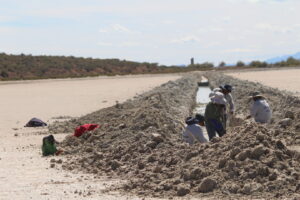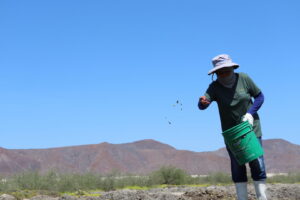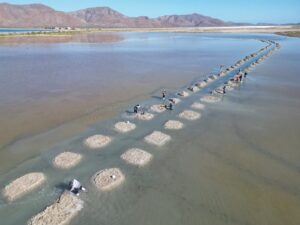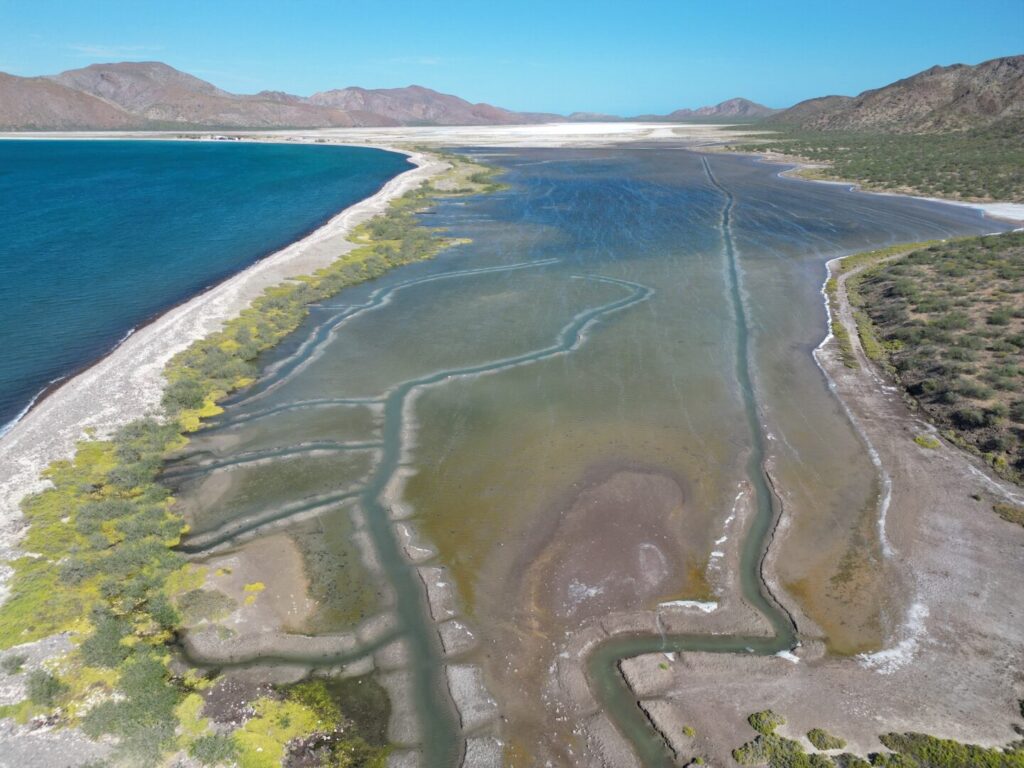The Carmen Islandlocated in the municipality of Loreto, Baja California Surhas witnessed decades of salt extraction that have left a marked deterioration in their mangroves and wetlandshowever, a community effort led by residents of Ensenada Blanca seeks to reverse this environmental damage and restore the ecosystems affected.
Since the beginning of the 20th century, salt extraction on Carmen Island even led to the founding of a town to house the workers, notes an article published by Mongabay.
The boom of this economic activity came to an end in the 1980s, leaving as mute witnesses the ruins of buildings, machinery, a church and a dock. This process implied the removal of at least 200 hectares of mangrove forest, causing a strong environmental deterioration that has endured to the present day.

The biologist Arturo Peñadirector of the regional office in Loreto of Wildlife Organization (OVIS) A.C., who has been working on the conservation of the area for almost three decades, explains that the salt mining activity involved flooding lagoons and evaporating water to obtain salt. This intervention altered the natural flow of the ecosystems and resulted in the significant loss of mangroves.
In response to this situation, the community of Ensenada Blanca joined forces to initiate a process of environmental restoration in the Carmen Islandfor which they found the support and collaboration of the National Commission of Natural Protected Areas (Comisión Nacional de Áreas Naturales Protegidas) (Conanp), OVIS and the North American Center for Environmental Information and Communication (Ciceana) A.C.
"We are 12 people from the community, five women and seven men, and we are fishermen. I am in charge of organizing the outings and the team. We trained and learned about the work of the mangroves. Now we know what they are for. The trees produce oxygen, clean the air and protect many species, but also the coastline from hurricanes," he explains.

The restoration project includes the rehabilitation of the hydrologic system The wetland was cleaned by clearing natural channels and building vegetation terraces. These terraces, created from the sediment extracted from the canals, serve as a substrate for planting mangrove seedsthus facilitating the growth of new plants.
To date, 40 terraces have been built and some two kilometers of canals have been opened to facilitate the entry of seawater. In addition, more than 11,000 black mangrove and 2,000 red mangrove propagules have been collected and planted, with positive results in terms of survival and growth.

"Mangroves, wherever they are, are important. They are associated with coastal water bodies that are also part of the life cycle of many commercially important species in fisheries, starting with shrimp," Peña stresses.
The community's efforts are not limited only to the physical restoration of the ecosystembut also includes regular monitoring of water quality in the wetland. This monitoring will make it possible to evaluate the progress of restoration actions and to better understand the changes in the environment.
Preliminary results show a considerable decrease in salinity levels, indicating progress in salinity reduction. ecosystem recoveryHowever, continued long-term restoration and monitoring efforts will be needed to ensure the health and resilience of the mangroves and wetlands of the Carmen Island.
Source: Mongabay


